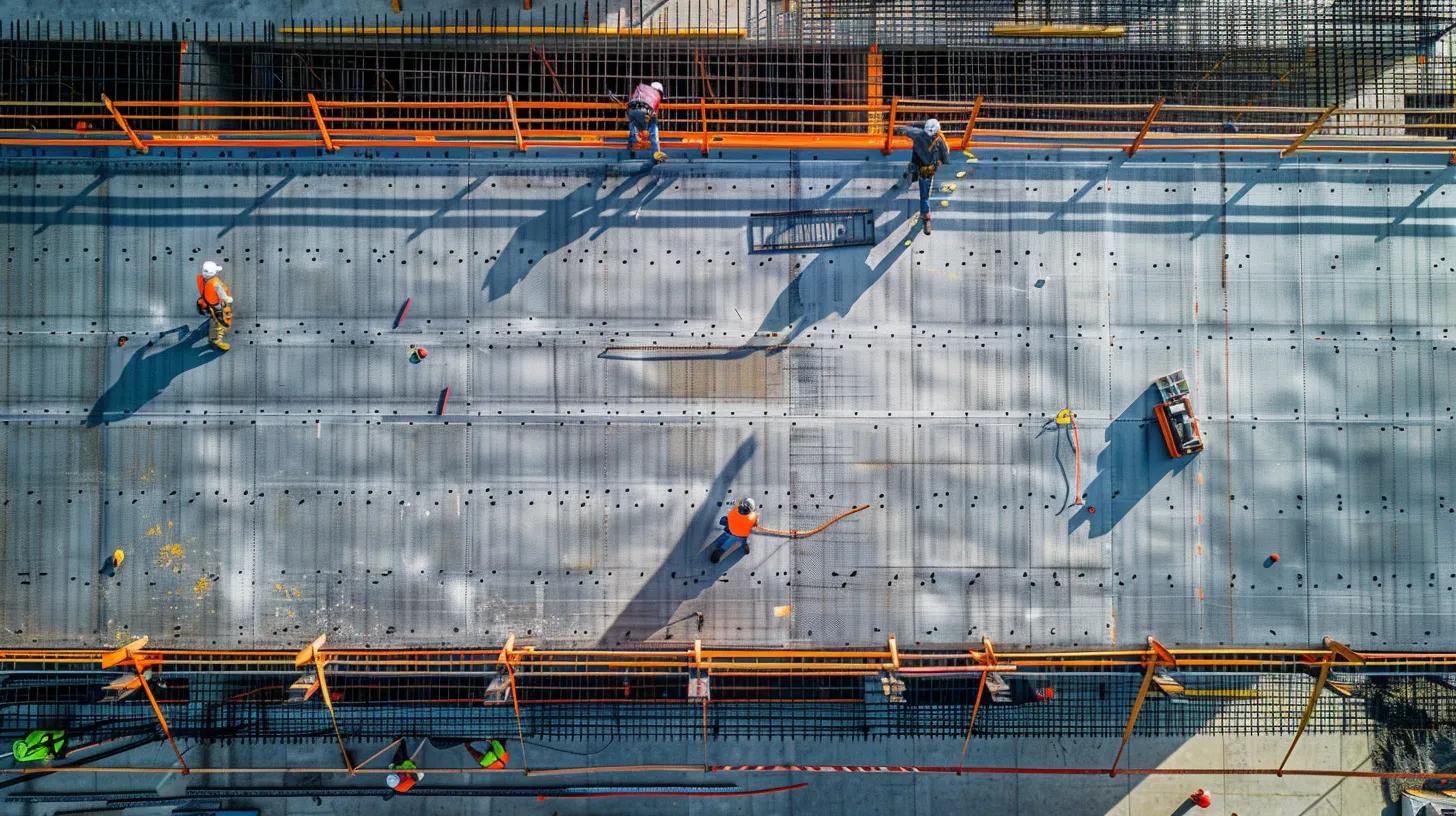Navigating Hurricane Resistance Standards for Roof Construction

Key Takeaways
Hurricane resistance in roofing relies on strict building code standards and material specifications.
Understanding core principles, critical roof components, and proper installation practices is essential for safety and longevity.
Local amendments and jurisdiction-specific codes ensure that roofing systems can withstand high wind speeds and debris impact.
Compliance with these standards, by obtaining proper permits and inspections, is crucial in mitigating risks during hurricane events.
Understanding Core Principles of Building Codes for Hurricane Roofing

Building codes define hurricane resistance through measurable standards for roof design and installation that protect against high wind speeds and debris impact. These codes start with categorizing hurricane wind zones, which dictate the specific wind speeds roofs must resist. Essential concepts such as “wind uplift” and “drift loads” are incorporated to ensure load distribution across roof components including roof decks, fasteners, and underlayment. Codes like ASCE 7 provide detailed methods to calculate wind loads and promote performance-based as well as prescriptive solutions. Local amendments to the International Building Code (IBC) and International Residential Code (IRC) further tailor these requirements to regional risks, ensuring that materials and attachment details meet both safety and durability needs.
Critical Roof Components for Hurricane Resilience Per Building Codes
Roof deck attachment is fundamental for high wind resistance. Building codes require the use of corrosion-resistant, high-grade fasteners and engineered strap systems to secure the roof deck, reducing movement and preventing uplift. Underlayment is also critical; codes mandate tear-resistant, synthetic membranes that firmly adhere to the deck, providing a secondary barrier against moisture and wind-driven rain. Fastening methods are specified with regulated nailing patterns using galvanized or stainless steel fasteners, along with adhesive bonding and mechanical clips in vulnerable areas like ridges and valleys. Drip edges and flashing are required to guide water off the roof efficiently, thus protecting the underlayment while reducing wind uplift. Additionally, roof sheathing must be at least ⅜ inch thick and constructed with high-grade plywood or OSB, treated for moisture resistance and fire retardancy to serve as a strong base for the roofing assembly.
Selecting Roofing Materials Meeting Hurricane Resistance Standards

Roofing materials play a key role in achieving hurricane resistance. Approved architectural asphalt shingles, for instance, are tested to resist wind speeds up to 130 miles per hour and are installed with specific fastening schedules to secure them against uplift and debris impact. Metal roofing systems offer durability through their interlocking design and robust fastening, often exceeding required wind resistance and impact levels while also enhancing energy efficiency in coastal climates. For tile roofs, precise installation with specific screws, clips, and compatible underlayments is mandated to hold the tiles securely during strong winds. Flat roof materials, such as modified bitumen or single-ply membranes, are engineered with powerful adhesives and mechanical fasteners to resist wind pressure and water pooling. Additionally, roofing materials must meet standardized impact resistance ratings, such as Class 4 for asphalt shingles and metal panels, ensuring they absorb high-velocity impacts without sustaining damage.
Installation Practices Mandated by Building Codes for Hurricane Roofing
Efficient installation practices are essential for a roof’s hurricane performance. Building codes set strict requirements for nailing patterns that ensure even load distribution across all shingles, reducing the risk of blow-off during extreme wind events. Proper sealing and adhesion techniques are also required, with the use of high-quality sealants on all roof penetrations and edges, supplemented by extra laps and reinforcement in valleys and ridgetops. Valley construction must include both metal flashings and additional underlayment to create a secondary barrier against water intrusion. Ridge vents, while essential for ventilation, must be installed with precise overhang and secure fastening to avoid becoming failure points during high winds. For roof penetrations such as vents and chimneys, high-performance sealants and flashings are applied in multiple layers to maintain a continuous, watertight barrier under hurricane conditions.
Navigating Regional Variations in Hurricane Roofing Code Standards

Regional variations in building codes reflect differences in environmental risks. The Florida Building Code (FBC) is notably stringent, mandating enhanced roof deck fastening, specific material grades, and high-wind-rated products, along with accelerated permitting and inspection procedures due to the state's high hurricane risk. In Texas, state regulations work alongside local codes, requiring high wind ratings and secure attachment methods to withstand storm surges and debris impact, minimizing property damage and supporting effective insurance claims. The International Residential Code (IRC) provides a baseline for residential roofing in hurricane regions, often supplemented by local amendments to address specific conditions. Coastal areas, facing higher wind speeds, saltwater corrosion, and severe debris impacts, have stricter requirements compared to inland regions, which still maintain robust measures to handle high-wind events. Homeowners and contractors can access local building departments or municipal websites to stay updated on adopted code changes that reflect evolving risks and advancements in roofing technology.
Ensuring Compliance With Hurricane Resistance Roofing Standards
Compliance with hurricane roofing standards is ensured through a rigorous process of permitting and inspections. Contractors must submit detailed roofing plans that adhere to local codes, including specific fastener types, material selections, and installation methods. The approval process requires pre-construction reviews and final inspections to ensure every element meets the mandated standards. Regular inspections at various project stages serve to catch deficiencies early, thereby reducing the risk of roof failure during hurricanes. Comprehensive documentation—such as roofing plans, material certifications, and inspection reports—is required to verify compliance. Failure to follow these standards can result in fines, forced repairs, or even necessitate a complete roof replacement, while non-compliance might void insurance policies. To remain current, contractors are advised to monitor updates from building departments, professional roofing associations, and industry newsletters, and to participate in continuing education programs related to hurricane resistance and wind engineering.
Frequently Asked Questions
Q: How do hurricane roofing codes improve roof durability?
A: They define precise wind speed ratings, material grades, and fastening techniques that enable roofs to resist extreme wind forces and debris impact.
Q: What is the role of ASCE 7 in hurricane roof design?
A: ASCE 7 provides the engineering guidelines needed to calculate wind loads and design roof assemblies capable of withstanding high wind pressures.
Q: Why is proper roof deck attachment critical during hurricanes?
A: Secure attachments prevent roof uplift, ensuring the continuity of the roofing system under the stress of high winds.
Q: How can local amendments affect hurricane roofing installations?
A: Local amendments tailor national building codes to address specific regional risks by imposing stricter material and installation requirements.
Q: What documentation is required for verifying compliance with hurricane codes?
A: Detailed roofing plans, material certifications, inspection reports, and permitting records are essential to demonstrate full adherence to the standards.
Final Thoughts
Hurricane-resistant roofing is a vital element of building safety in regions prone to extreme weather. Strict adherence to established building codes—including proper material selection, secure fastening, and precise installation practices—ensures roofs can withstand high wind speeds and debris impact. Through thorough documentation, regular inspections, and continuous monitoring of local code updates, homeowners, builders, and contractors can significantly enhance a roof’s structural integrity. This commitment to compliance and proactive maintenance is key to protecting property and lives in increasingly volatile climate conditions.



